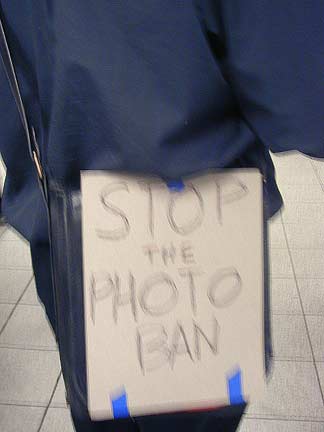
The story appeared in The City section of the NYTimes on Sunday. It was part of an article describing the history of the World Trade Center site. As I read it I felt that its outline seemed very familiar. It described the manipulation of the power of the state for personal gain, but while both the profit and the loss associated with two years of warfare against the Indians in New Netherland was on a much smaller scale than that of the imperial Bush wars, has anything changed much in four centuries?
Jan Jansen Damen, who came from Holland around 1630 to help set up the new colony, was more than just a simple farmer. The first European owner of what would later become part of the World Trade Center site had much greater ambitions.We won't be so lucky with Bush's name.Like an early Donald Trump, Damen had a thirst for land and wealth. He pushed aggressively to secure commitments from the Dutch West India Company for grants or leases of property located just north of the barricade that was Wall Street. Below this barrier was all of settled New York, the land where the pioneers had built their crude, wooden-roofed homes.
When trouble came in the form of Indian attacks on settlers, the Dutch governor turned to Damen for advice, naming him in 1641 to New York's first local governing board, known as the Twelve Men.
The board's chairman, David Pietersen De Vries, urged Gov. Willem Kieft to be patient, as the tiny colony, with little in the form of arms or soldiers, was vulnerable and "the Indians, though cunning enough, would do no harm unless harm were done to them."
Damen did not agree. His land, at the edge of the settled area, was particularly vulnerable. In February 1643, accounts written at the time say, Damen and two other members of the Twelve Men entertained the governor with conversation and wine and reminded him that the Indians had not complied with his demands to make reparations for recent attacks. "God having now delivered the enemy evidently into our hands, we beseech you to permit us to attack them," they wrote in Dutch, in a document that survives today.
DeVries tried to calm Governor Kieft: "You go to break the Indians' heads; it is our nation you are about to destroy." But the governor disagreed. It was time, he resolved, "to make the savages wipe their chops."
The assault, which took place about midnight on Feb. 25, 1643, in Jersey City, then called Pavonia, and at Corlears Hook, now part of the Lower East Side, was an extraordinarily gruesome affair. "Infants were torn from their mothers' breasts and hacked to pieces," DeVries relates in his journal. Others "came running to us from the country, having their hands cut off; some lost both arms and legs; some were supporting their entrails with their hands, while others were mangled in other horrid ways too horrid to be conceived." In all, more than 100 were killed.
The region's Indian tribes united against Governor Kieft and the colonists. Damen was nicknamed "the church warden with blood on his hands," and expelled from the local governing board. The governor was ultimately recalled by the Dutch. The colony, over two years of retaliatory attacks, sank to a desperate state."Almost every place is abandoned," a group of colonists wrote to authorities in Holland in late 1643. "We, wretched people, must skulk, with wives and children that still survive, in poverty together, in and around the fort at the Manahatas, where we are not safe even for an hour whilst the Indians daily threaten to overwhelm us."
Damen died about 1650. His heirs sold his property to two men: Oloff Stevensen Van Cortlandt, a brewer and one-time soldier in the Dutch West India militia, and Dirck Dey, a farmer and cattle brander. Their names were ultimately assigned to the streets at the trade center site. Damen's was lost to history
Note: The native American peoples in Manhattan were of the group, Lenape or Lenni-Lenape, later catagorized by the Europeans as Upper Delaware.
[image from RootsWeb for Montgomery County]
